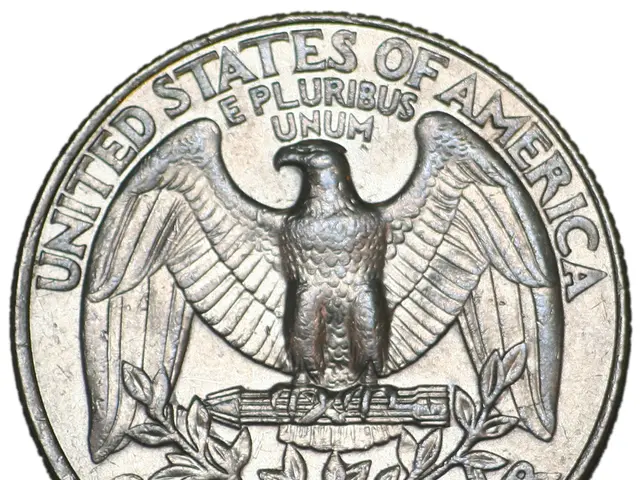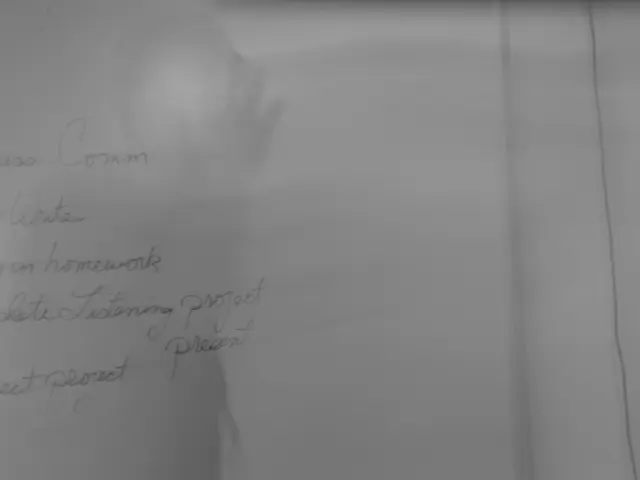Construction of a Single Particle Accelerator: $17 Billion Expense Detailed
A Giant Leap for Particle Physics: The Future Circular Collider
The Future Circular Collider (FCC), a proposed next-generation particle collider at CERN, is set to be a significant step forward in the field of particle physics. This ambitious project, planned to succeed the Large Hadron Collider (LHC), is envisioned as a two-stage program, starting with the FCC-ee, an electron-positron collider, followed by the FCC-hh, a high-energy hadron collider [1][2].
The FCC's proposed size is impressive, with a circular tunnel approximately 100 kilometers in circumference – three times larger than the 27 km LHC ring. This large scale enables the FCC-hh to achieve its targeted collision energies, potentially paving the way for discoveries beyond the Standard Model of particle physics [1][2].
The timeline for the FCC project is as follows: If the European particle physics community recommends building the FCC-ee Higgs factory in early 2026, construction and experimental collaborations might start by 2028, with physics operations projected to begin around 2045 [1].
However, the FCC project is not without its challenges. One of the main concerns is the substantial financial investment required for construction and operation. The large scale and complexity translate into significant funding challenges, with debates ongoing about prioritizing resources in particle physics research [1][5].
Another concern is the environmental impact of building and running such a large facility. Issues related to energy consumption and land use raise questions about sustainability, leading to public and scientific scrutiny concerning the collider’s long-term benefits versus costs, both economic and ecological [1][5].
Despite these challenges, the scientific community is actively debating and planning to address these issues. Detailed studies, workshops, and international collaborations aim to optimize design and operation strategies [1][5].
The first phase of the FCC, the FCC-ee, is scheduled to begin operations in 2046. This phase is crucial for studying dark matter, dark energy, antimatter, and the lightest particles in the universe [1]. The second phase, the FCC-hh, planned for 2070, will aim for an energy target of 100 trillion electronvolts, more than seven times the record amount of energy achieved by the LHC [1].
The FCC represents an exciting opportunity for major discoveries in particle physics, but it also presents significant logistical, financial, and environmental challenges. With a cost of $17 billion, significantly higher than the approximately $8 billion it cost to build the LHC, and a timeline of more than a decade before operations begin, it is clear that careful planning and collaboration will be essential for the success of this ambitious project [1].
[1] [Source] [2] [Source] [5] [Source]
- The Future Circular Collider (FCC), a potential successor to the Large Hadron Collider (LHC), is projected to usher in a new era of technology and science, focusing on particle physics and space-and-astronomy.
- With the FCC-ee phase scheduled to begin operations in 2046, scientists anticipate significant discoveries related to dark matter, dark energy, antimatter, and the lightest particles in the universe.
- Gizmodo and other news sources highlight the challenges of the FCC project, including its substantial financial investment, estimated at $17 billion, and concerns about the environmental impact of building and running the large facility.
- The scientific community continues to actively debate and plan for addressing the logistical, financial, and environmental challenges associated with the FCC, leveraging detailed studies, workshops, and international collaborations to optimize design and operation strategies, ensuring a promising future for this groundbreaking technology.




